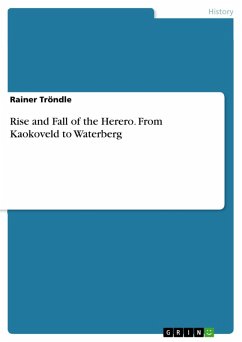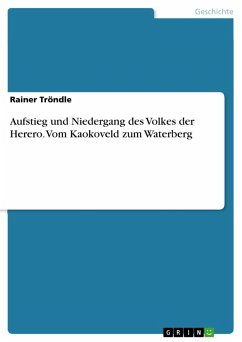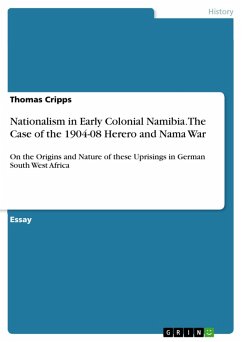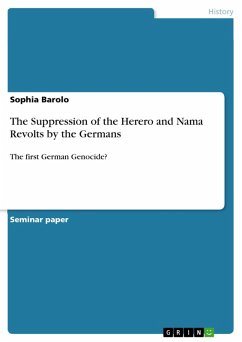Document from the year 2023 in the subject History - Africa, , language: English, abstract: This book is an attempt to outline the customs and traditions as well as the history of the Herero since their emigration from Kaokoveld and to estimate the development and the size of their population based on natural conditions and historical events. The book focuses especially on the disastrous years of 1896-1900 and their consequences for the Herero, which seem to have been insufficiently investigated by historians so far. By the middle of the 18th century courageous groups of the Herero began to leave their homeland Kaokoveld and started to enter the middle part of Namibia. Until 1830 they colonized the area up to the Swakop Rivier. During their acquisition of the land they displaced, killed or enslaved the indigenous ethnic groups, the San and Damara, who had already settled there for many thousands of years. Finally, they came into contact with the Nama people who had left the Cape region under the pressure of the white men. On their way to the North, they also had displaced or killed the native population. For decades both peoples fought each other. In the eighteen-eighties the country got gradually under the control of German colonists. During a series of disastrous years (1896-1900) considerable parts of the herds of the Herero were diminished above all by cattle plague. A great famine was the first result. Subsequently many thousand Herero died of diseases. Drought, locusts and beasts of prey aggravated the situation even more. After the loss of their cattle the Herero were impoverished and in a desperate situation. Hard and partly unfair treatment by arrogant white settlers and impertinent traders increased the bitterness and the hatred against the intruders. All this finally led to a general uprising in 1904. Finally, the decisive battle of Waterberg was fought. The Herero were forced to give up and withdraw. Many of them tried to escape to British-Bechuanaland. But crossing the arid area of the Omaheke thousands died of thirst and starvation. In 1912 only about 20,000 Herero still existed in GSWA. A few thousand lived as refugees in Bechuanaland, the Kaokoveld, in Ovamboland and in other places. The nation was shattered.
Dieser Download kann aus rechtlichen Gründen nur mit Rechnungsadresse in A, B, BG, CY, CZ, D, DK, EW, E, FIN, F, GR, HR, H, IRL, I, LT, L, LR, M, NL, PL, P, R, S, SLO, SK ausgeliefert werden.









